Note: This website was automatically translated, so some terms or nuances may not be completely accurate.
The Founder's Vision: "Sowing Seeds of Joy" at the Duskin Museum
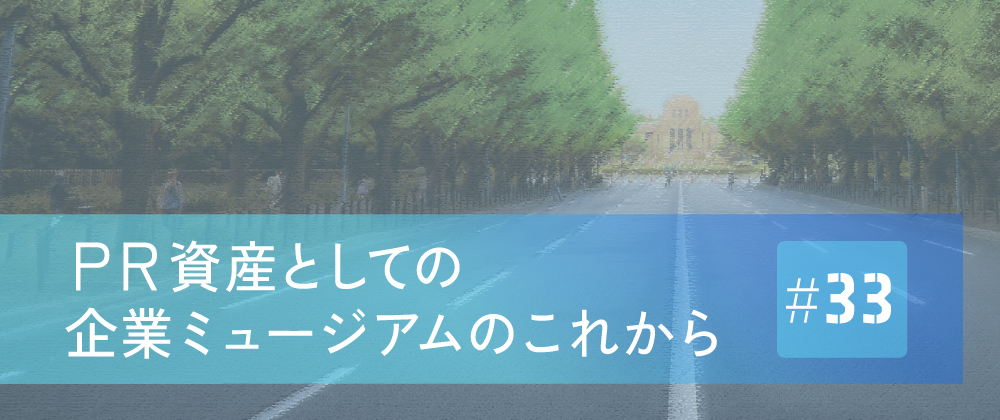
Corporate museums occupy a buffer zone straddling both the academic realm of "museums" and the business realm of "corporations." They are organizations that collaborate diversely with corporate departments such as public relations, branding, advertising, and human resources. In this series, PR professionals will introduce various museums run by corporations and discuss their roles, functions, and potential.
Duskin stands as a pioneer of franchise business in Japan. Beyond franchising, the company has practiced concepts now commonplace—such as "subscription services," "circular economy," and even "women's advancement in society"—within the cleaning services sector since its founding over 60 years ago. Always ahead of its time, Duskin operates the Duskin Museum in Suita City, Osaka Prefecture, the birthplace of the company. This article introduces the initiatives undertaken at the company museum, alongside the content of its newly renovated area, completed in 2024.
Reporting and Text: Kyoko Fujii (PR Consulting Dentsu Inc.)
A Corporate Museum Centered on Duskin's Two Major Businesses: "Cleaning" and "Mister Donut"
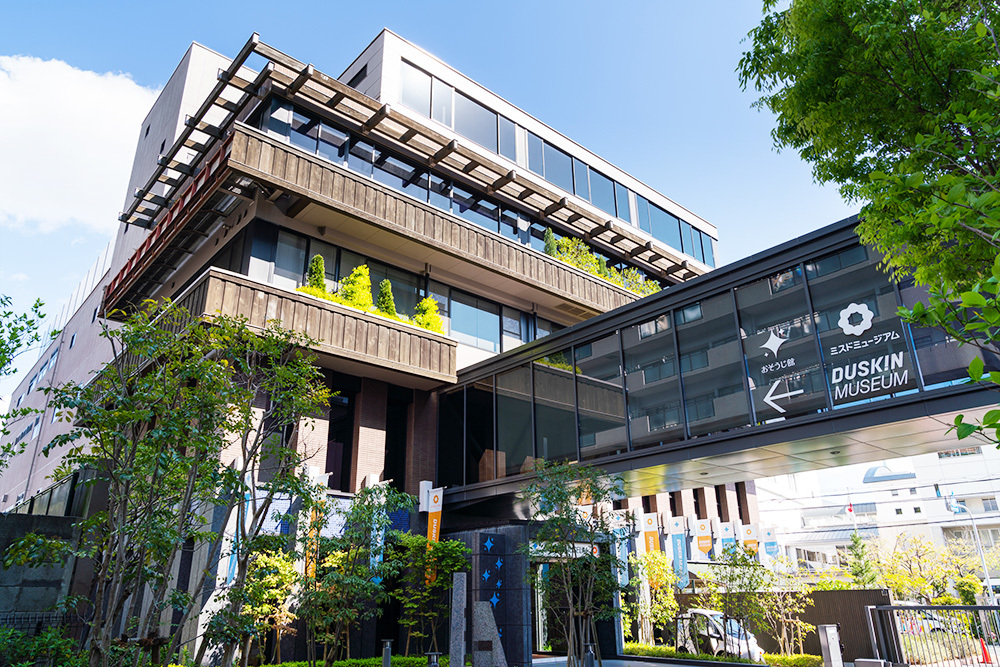
Located in Suita City, Osaka Prefecture, the birthplace of the company, the Duskin Museum occupies the first and second floors of a building that also houses Duskin's training facilities. With a total floor area of 1,320 square meters and operated by approximately 40 staff members, the first floor houses the "Mister Donut Museum" and the second floor the "Cleaning Museum," presenting content centered on Duskin's two major businesses. The museum was planned as part of the company's 50th anniversary celebrations in 2013 and opened in 2015.
At its founding, the General Affairs Department, which manages the building, was the responsible department for the museum. It was later transferred to the Public Relations Department. The current director, Yukie Sugino, belongs to the Public Relations Department. Since joining the company in 1989, she has worked in the Food Group and Visiting Sales Group divisions before spending a long time in the Public Relations Department handling corporate communications. She assumed the role of Director of the Duskin Museum in April 2024. She is someone with deep knowledge of the company's history and culture, having worked at Duskin for many years.
The Duskin Museum aims to be a place enjoyable for all generations, targeting diverse audiences. While many visitors are families or groups of friends, the museum also hosts tours for employees of franchise stores and conducts training for the company's new hires. To accommodate international visitors, pamphlets in English, Chinese, and Korean are available for download from the website.
The museum has become a popular corporate museum in Osaka's Hokusetsu region, surpassing 400,000 cumulative visitors in February 2024. Annual attendance from April 2023 to March 2024 reached a record high of approximately 100,000 visitors. On busy days, especially weekends, lines of up to 50 people form before opening time. The hands-on donut-making experience is particularly popular and operates on a lottery system requiring advance registration. While the post-renovation target is 120,000 annual visitors, exceeding this would surpass the facility's capacity, making 120,000 the absolute maximum number of visitors it can comfortably accommodate.
2nd Floor: "Cleaning Museum"
First, let's introduce the "Cleaning Pavilion" on the second floor. The "Cleaning Pavilion" features exhibits where you can learn about Duskin and the history of cleaning.
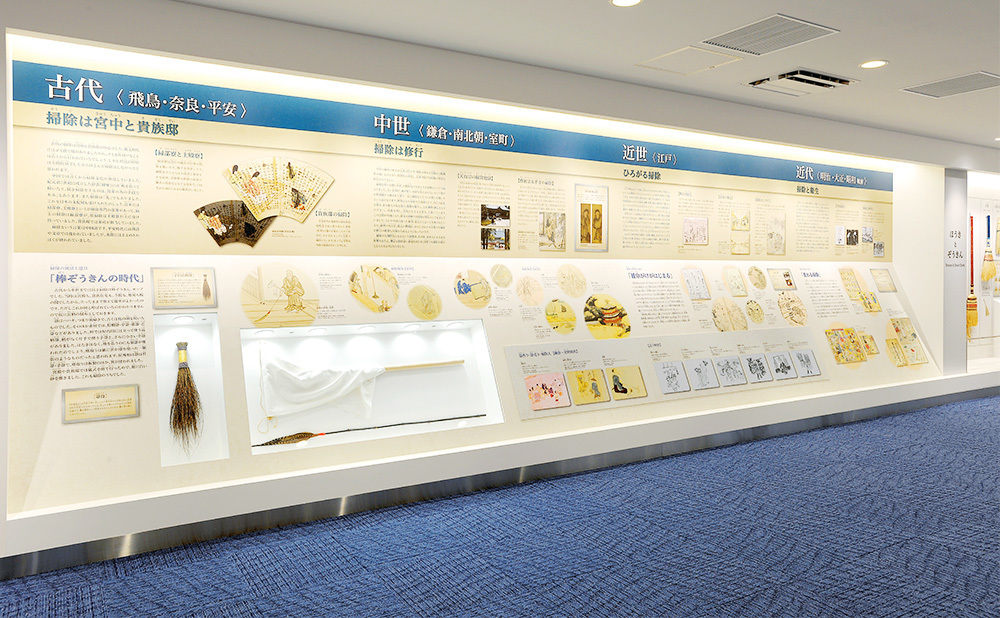
The origins of Duskin date back to 1961 (Showa 36). Founder Seiichi Suzuki (no honorifics), born in 1911 (Meiji 44), originally ran a company providing building maintenance and selling cleaning supplies. In 1959 (Showa 34), Suzuki met Dr. Melvin J. Evans, founder of the DIA (Democracy in Action) movement, which promoted corporate democratization based on Christian principles. Impressed after attending Dr. Evans' lecture in Nara, Suzuki traveled to the United States two years later in 1961 to participate in DIA training. Dr. Evans introduced him to Lou Mendelson, President of Central Oval Company in Canada.
Suzuki formed a friendship with Mendelson, who imparted the technology for the Dust Control System to him free of charge. The Dust Control System is a method of removing dust and dirt without water, by impregnating cleaning tools with a special adsorbent. At that time, the standard cleaning tools in Japan were feather dusters, brooms, and rags. Since mopping with rags required water, it was a significant burden for those responsible for housework, especially during winter. Upon returning to Japan, Suzuki immediately launched the Dust Control business. In 1963 (Showa 38), he established Sanikleen Co., Ltd. The following year, in 1964 (Showa 39), the company name was changed to Duskin Co., Ltd. That same year, the chemical rag was born under the name "Home Duskin."

This new waterless cleaning method spread rapidly nationwide, freeing people from the drudgery of wet mopping and earning the nickname "magic cloth."
Franchising, Subscription, and Active Hiring of Women
This groundbreaking new product also pioneered a revolutionary business model. At the time, Central Oval Inc. operated its Dust Control business in Canada through franchising. Franchising was a concept unfamiliar to the Japanese. To provide business opportunities to those who shared Duskin's management philosophy of prioritizing customer satisfaction, Suzuki introduced a franchise system that supplied products and operational know-how to franchisees. While the franchise system was originally introduced by Sanikleen, Duskin's predecessor, Duskin became a pioneering company in Japan by quickly adopting this system.
Furthermore, instead of purchasing products outright, Duskin adopted a rental system where dirty items were regularly exchanged for clean ones. While subscription-based business models are commonplace today, Duskin had already implemented this approach over 60 years ago.
DUSKIN actively hired women as customer service representatives who visited contracted households to deliver rental items. This was groundbreaking, contributing to women's entry into the workforce at a time when it was still uncommon for women to hold jobs.
Furthermore, the Home Duskin rental system pioneered an environmentally friendly circular economy. Used rental items are collected, with 97% remanufactured. The remaining 3%, which is difficult to remanufacture, is recycled as fuel. Even the dust and dirt collected on mops and mats are recycled as cement materials. In this way, Duskin has consistently been a company at the forefront of introducing numerous new business models in Japan.


Beyond Duskin and cleaning history, the Cleaning Museum also features interactive attractions. In the theater attraction "Duskin Dust Busters," where you battle house dust, you board a fighter jet and warp into a microscopic world. You adventure through rooms that have become dust havens and shoot down the advancing house dust. You can learn about cleaning while enjoying the thrilling excitement.
1st Floor: "Mister Donut Museum"
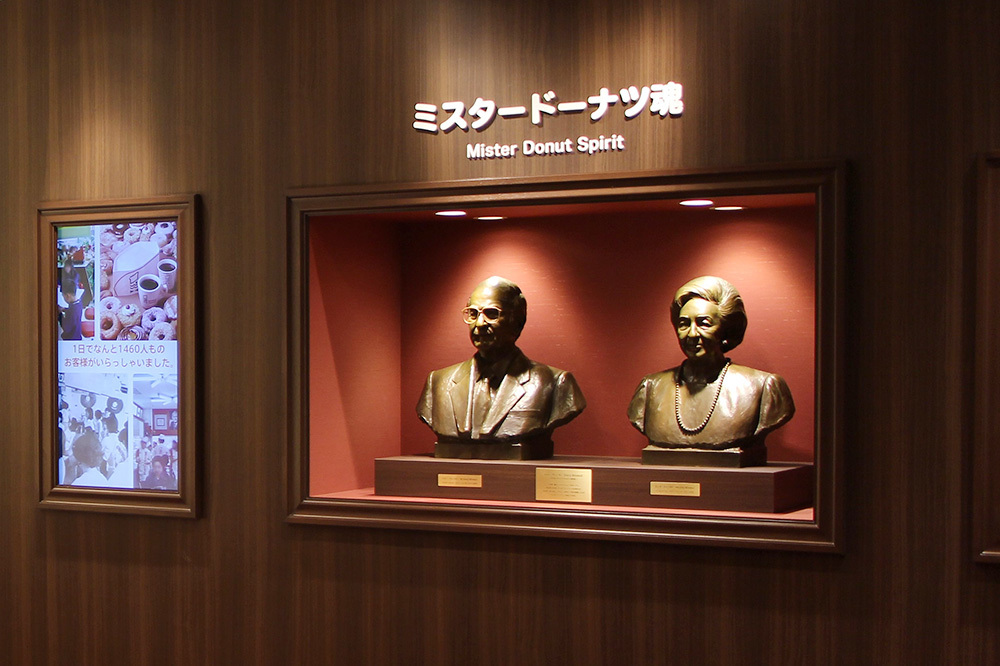
At the "Mister Donut Museum" on the 1st floor, busts of Harry Winokur, the founder of Mister Donut in America, and his wife Etta greet visitors at the entrance. As you proceed inside, the museum introduces the history of Mister Donut's donuts, reveals the secrets behind their deliciousness, and offers hands-on experiences showcasing the process of making donuts.
Incidentally, the museum's name "Misudo" comes from the nationally used abbreviation for Mister Donut. Similar abbreviations vary regionally: McDonald's is "Mac" in Kanto and "McDo" in Kansai, while Universal Studios is "USJ" in Kanto and "Uni-ba" in Kansai. While the exact reason "Misdo" gained nationwide use remains unclear, the decision to incorporate this three-letter abbreviation into the museum's name reflects a clear appreciation for its fans.
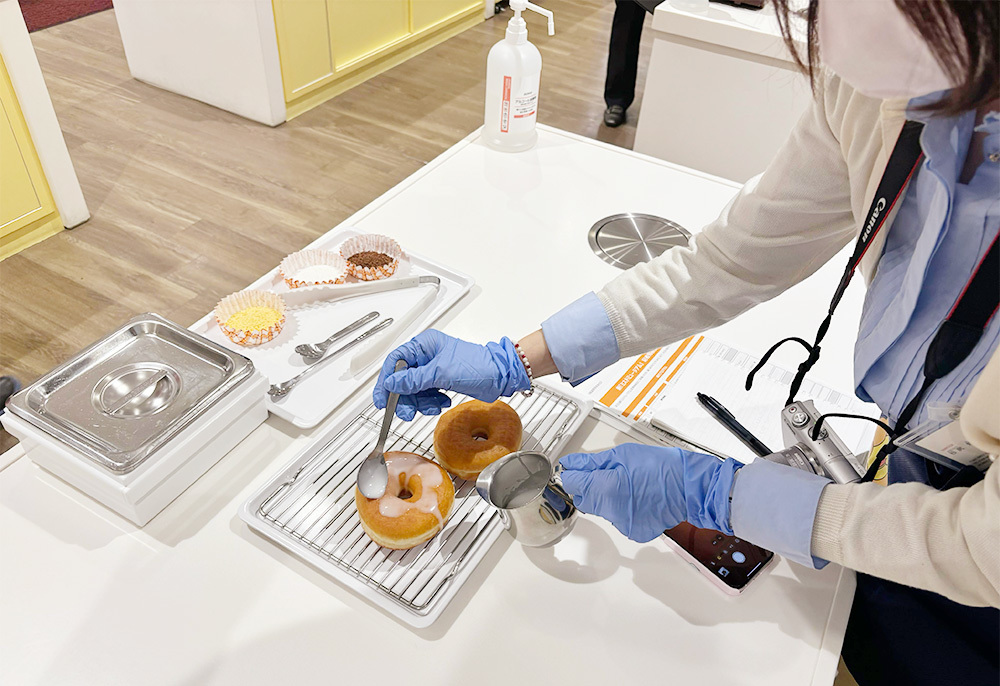
Entry into the Donut Business
Operating Mister Donut was a business domain entirely different from Dust Control. How did this venture come about?
In 1968 (Showa 43), just as Home Dustkin's business was finally gaining traction, Suzuki traveled to the United States to further study franchise systems. Through Dr. Evans' son, he visited Mister Donut of America, which had opened in the U.S. in 1955 (Showa 30), to learn about their system.
Although he initially had no intention of starting a food business, Suzuki was deeply impressed by the deliciousness of the donuts he tasted at an American store. Driven by the desire to "let as many customers as possible enjoy donuts this delicious and bring joy to as many people as possible," he decided to launch the business in Japan on January 27, 1970 (Showa 45). Mister Donut designates this memorable day as "Mister Donut Founding Day" and carries out various initiatives.
One such initiative is donating a portion of sales from all Mr. Donut stores in Japan on January 27 to the "Duskin Circle of Love Foundation," a public interest foundation supporting the independence and social participation of people with disabilities. The Duskin Circle of Love Foundation was established in 1981, the year following Mr. Donut's 10th anniversary and coinciding with the United Nations International Year of Disabled Persons, with the aim of supporting the independence and social participation of people with disabilities.
The foundation's activities consist of two human resource development programs: the "Duskin Overseas Training Program for Disabled Leaders," which sends young people with disabilities who aspire to contribute as community leaders overseas to provide them with training opportunities, and the "Duskin Asia-Pacific Disabled Leaders Development Program," which invites young people with disabilities from the Asia-Pacific region to Japan to provide them with training opportunities. To date, over 520 trainees have been dispatched from Japan. Including overseas trainees invited to Japan, over 670 individuals have completed training domestically and internationally. They have become leaders in welfare in their respective regions.
The Birth of Donut Forest
In March 2024, a new area was created within this "Mister Donut Museum," leading to its reopening. To mark the renewal, Duskin held a press conference and media preview at the museum on March 14. Reporters and camera crews from national newspapers, news agencies, and TV stations gathered for coverage. Following a briefing by Public Relations Director Akira Kita, journalists toured the new "Donut Forest" area. They then participated in donut decorating experiences and sampled freshly fried donuts at the Mister Donut Kitchen.
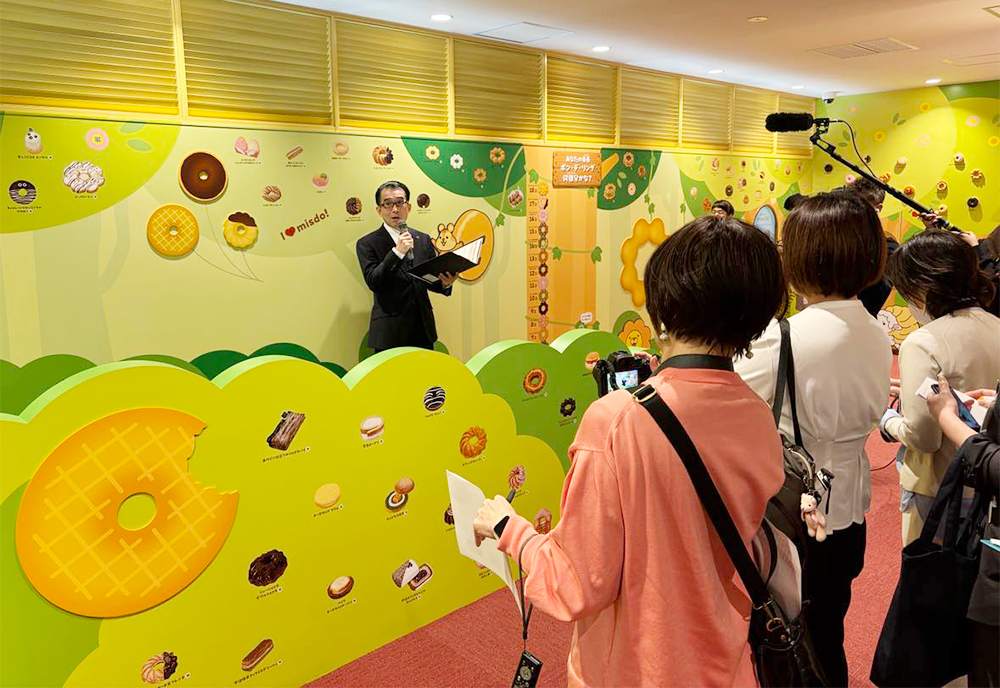
This Donut Forest was developed with the theme of evoking "delicious memories created by Mister Donut" for visitors to the Mister Donut Museum. It was conceived by staff who regularly work at the museum and Mister Donut stores.
From the over 1,800 types of donuts and pies sold to date, 127 varieties were carefully selected. These were transformed into donut fruits through illustrations and models, creating a forest where trees laden with donut fruits thrive. Each donut displayed along the approximately 11-meter-long wall features a QR code beneath it. Additionally, touch panel monitors installed in one corner of the wall allow visitors to view product descriptions. Touch panel monitors in a separate area also introduce activities related to the SDGs that Mister Donut is undertaking, enabling visitors to learn about the SDGs.
The Act on the Elimination of Discrimination against Persons with Disabilities and the Museum
The renovation of the "Mister Donut Museum" involved more than just installing new content. Barrier-free improvements were implemented simultaneously. Following the enforcement of the revised Act on the Elimination of Discrimination against Persons with Disabilities on April 1, 2024, the museum installed ramps where stairs previously existed, enabling smooth movement for wheelchair users and visitors with difficulty climbing stairs. Simultaneously, the touch panel search monitors were positioned with consideration for wheelchair users and small children, adjusting their angle, size, and the placement of search keys.
Mitsutoshi Ooyabu, who provided advice for this barrier-free initiative, is a graduate of the Duskin Overseas Training Program for Disability Leaders. Regarding this renovation, he stated: "I was very pleased to have the opportunity to propose the ramp installation and equipment upgrades. I hope they continue developing this into a 'facility that is kind to everyone.'"
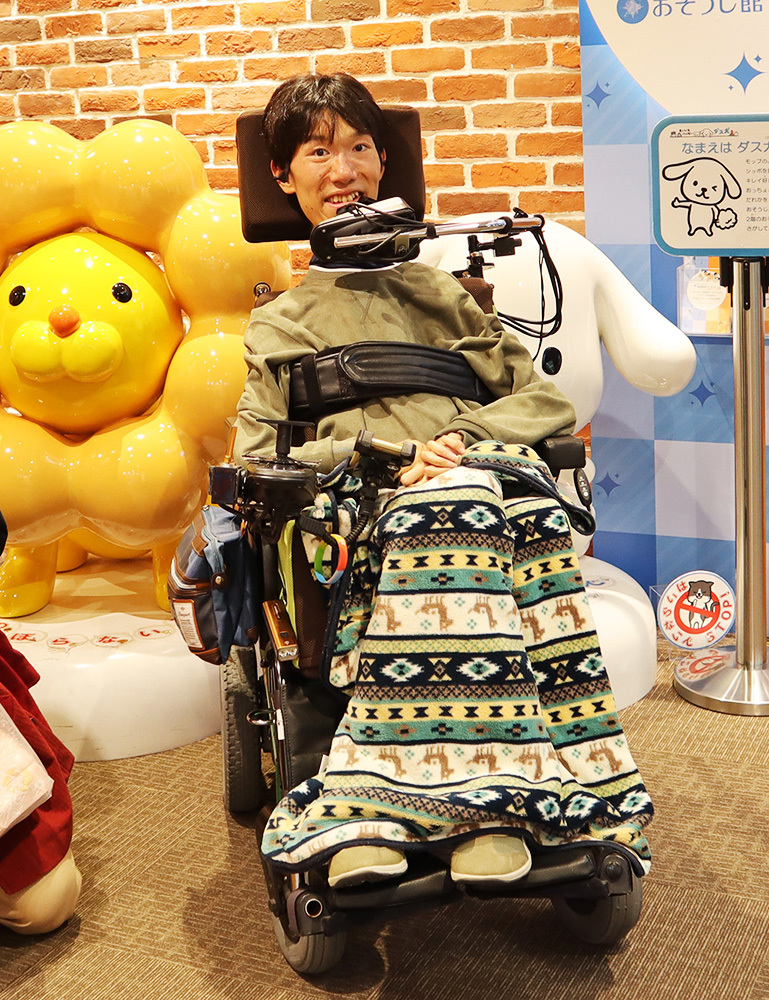
Sowing Seeds of Joy
"Duskin's work is sowing seeds of joy. Sowing seeds of joy means accumulating virtue and becoming a virtuous person. As a result, 'prosperity and development together' are brought about." These are the words left by founder Suzuki. Carrying on the founder's vision, the Duskin Museum is also utilized as a venue for Duskin's social contribution initiatives, such as collaborating with Osaka Prefecture to invite children who attend Suita City's children's cafeterias.
Duskin liberated people from the harsh task of cleaning with cold water and provided delicious memories through donuts. It has supported women's advancement in society and been an early adopter in addressing environmental issues. This museum will continue to evolve its function and role as a place for sowing seeds of joy, serving as a platform to communicate Duskin's practical solutions to social challenges.
[Editor's Note] (From the Web Dentsu Inc. News Editorial Department)
Life is, above all, a battle against dust. What is it about dust?
Even when you think you've cleaned it all away, somehow it's piled up again by the next morning.
Isn't that precisely why people feel fondness for a company like Duskin? "Ugh, dust again? But I just cleaned!" is a frustration everyone can relate to. "Let's figure out how to handle that" is the very essence of Duskin as a company.

I believe everyone wants to live in a clean home. But when asked, "What does it mean to live cleanly?" we pause and ponder. Duskin provides a clear answer right there. It makes you think, "Ah, thank goodness."
Was this article helpful?
Newsletter registration is here
We select and publish important news every day
For inquiries about this article
Back Numbers
Author

Kyoko Fujii
PR Consulting Dentsu Inc.
Executive Office, Public Relations Department / Visiting Associate Professor, Graduate School of International Liberal Arts
Supports public relations for domestic and international companies, governments, and municipalities. Currently serves as the company's public relations officer. Received the 2015 Golden World Award from the International Public Relations Association. Authored and edited works include: 'Municipal PR Strategy: Learning from 17 Success Stories' (Jiji Press), 'Communicating: A Guide to PR in Japan' (Wiley), and 'Welcome to the Corporate Museum: Volumes 1 & 2' (Jiji Press). Certified PR Planner by the Japan Public Relations Association. Visiting Associate Professor at the Graduate School of Global Communication and Language, Akita International University, starting in 2024.




